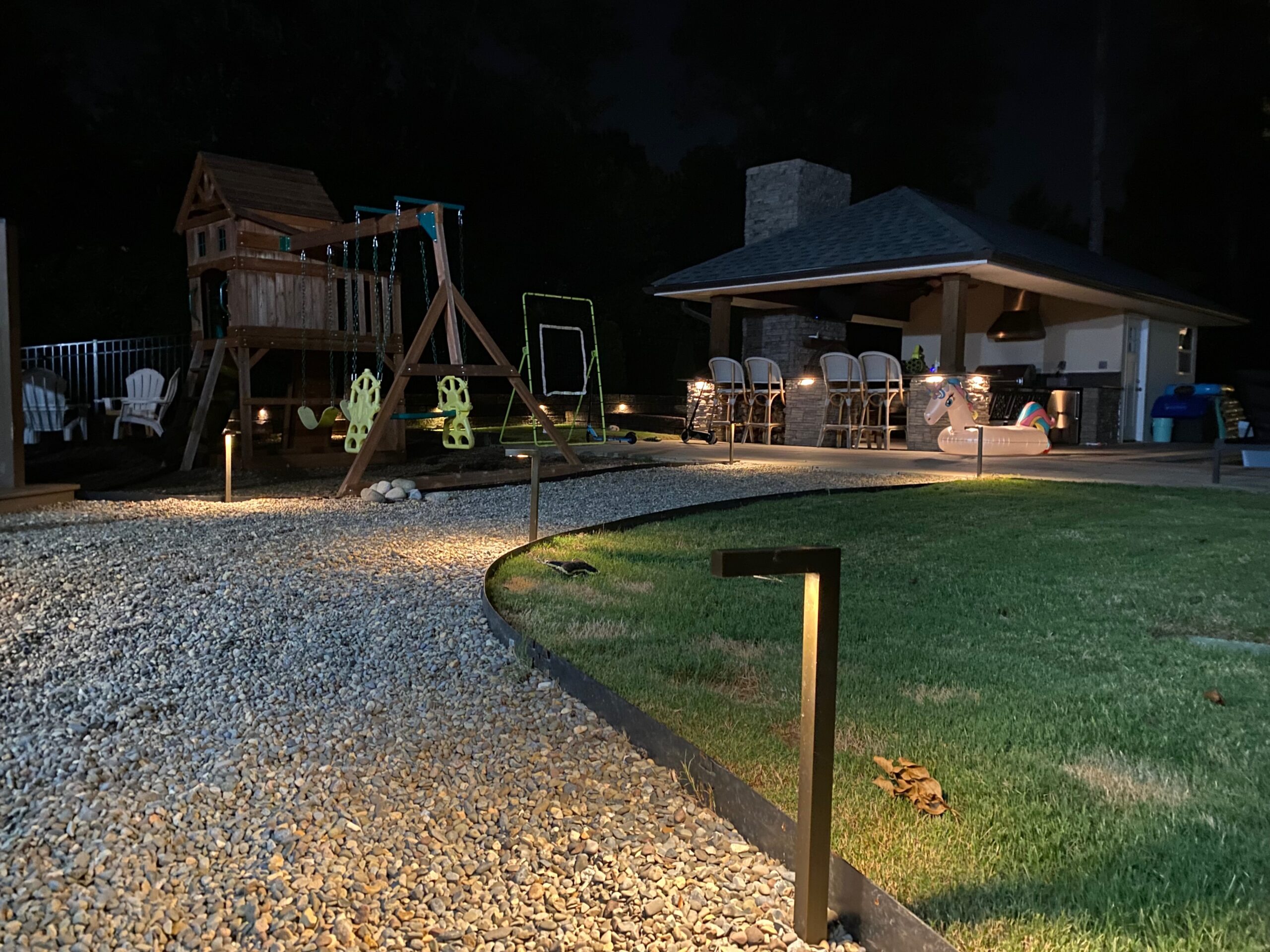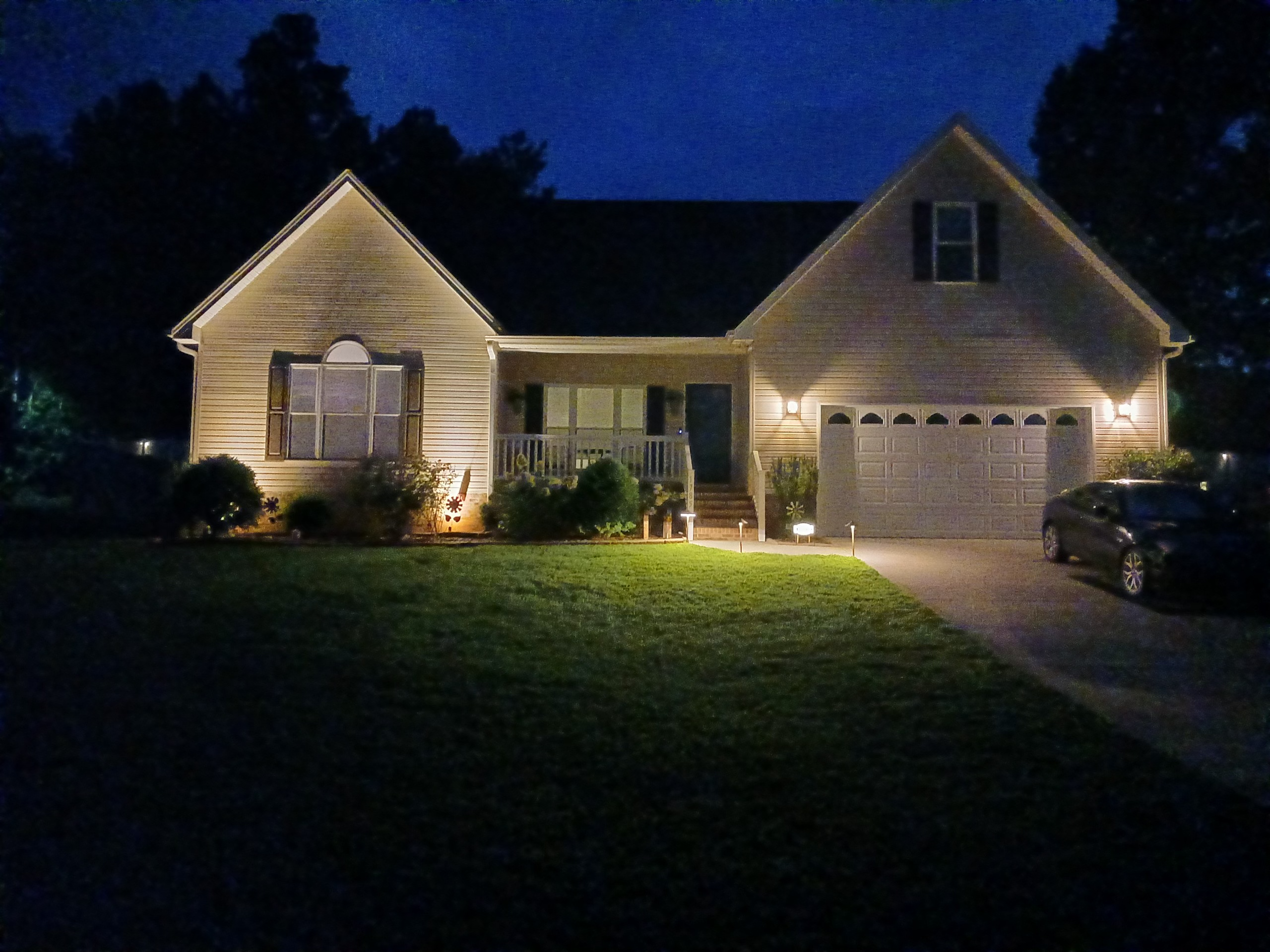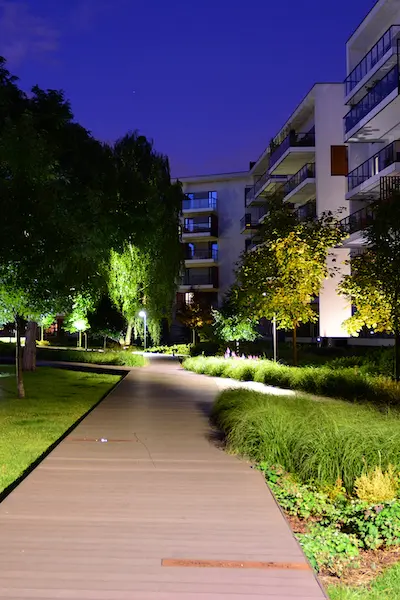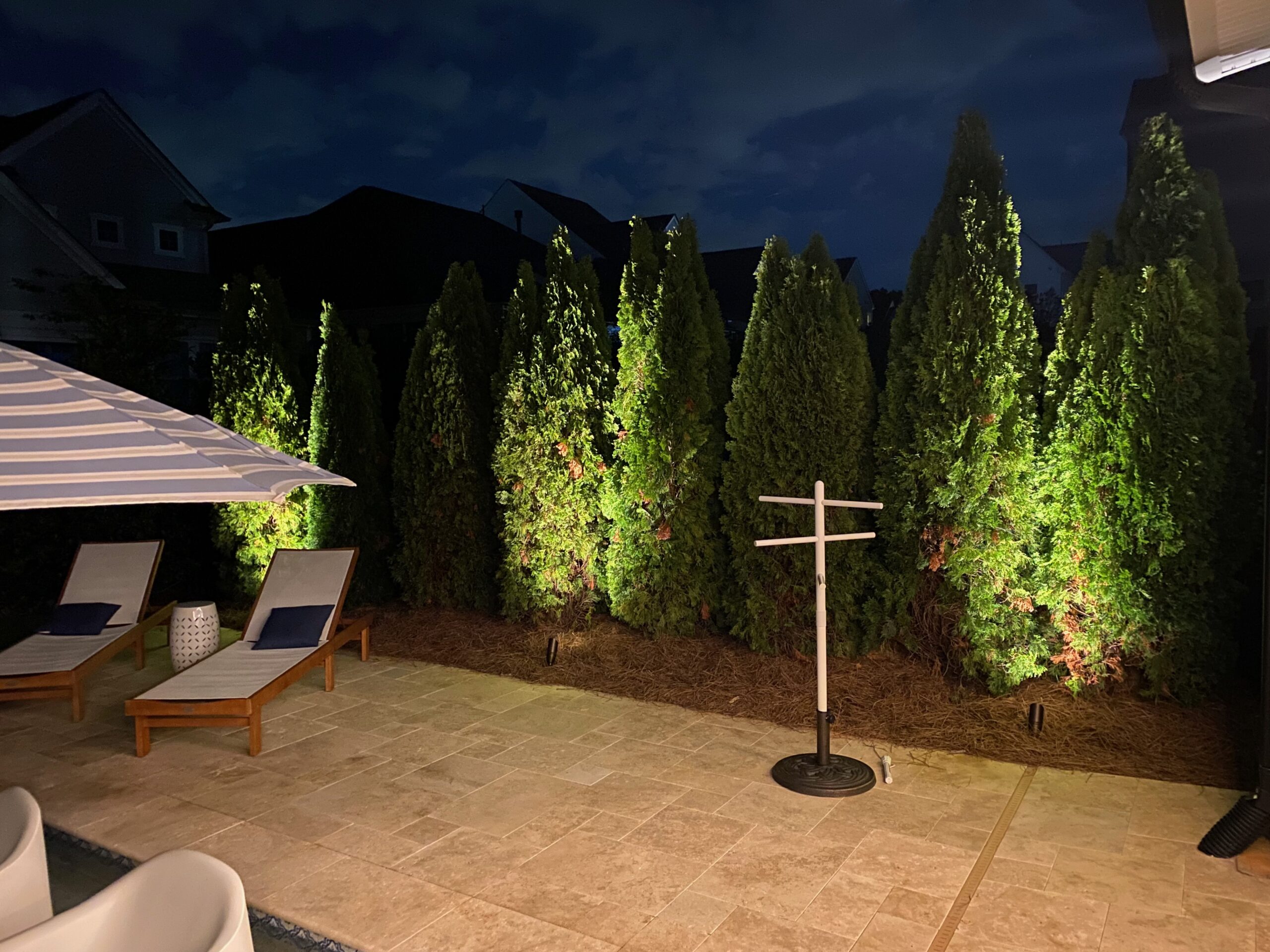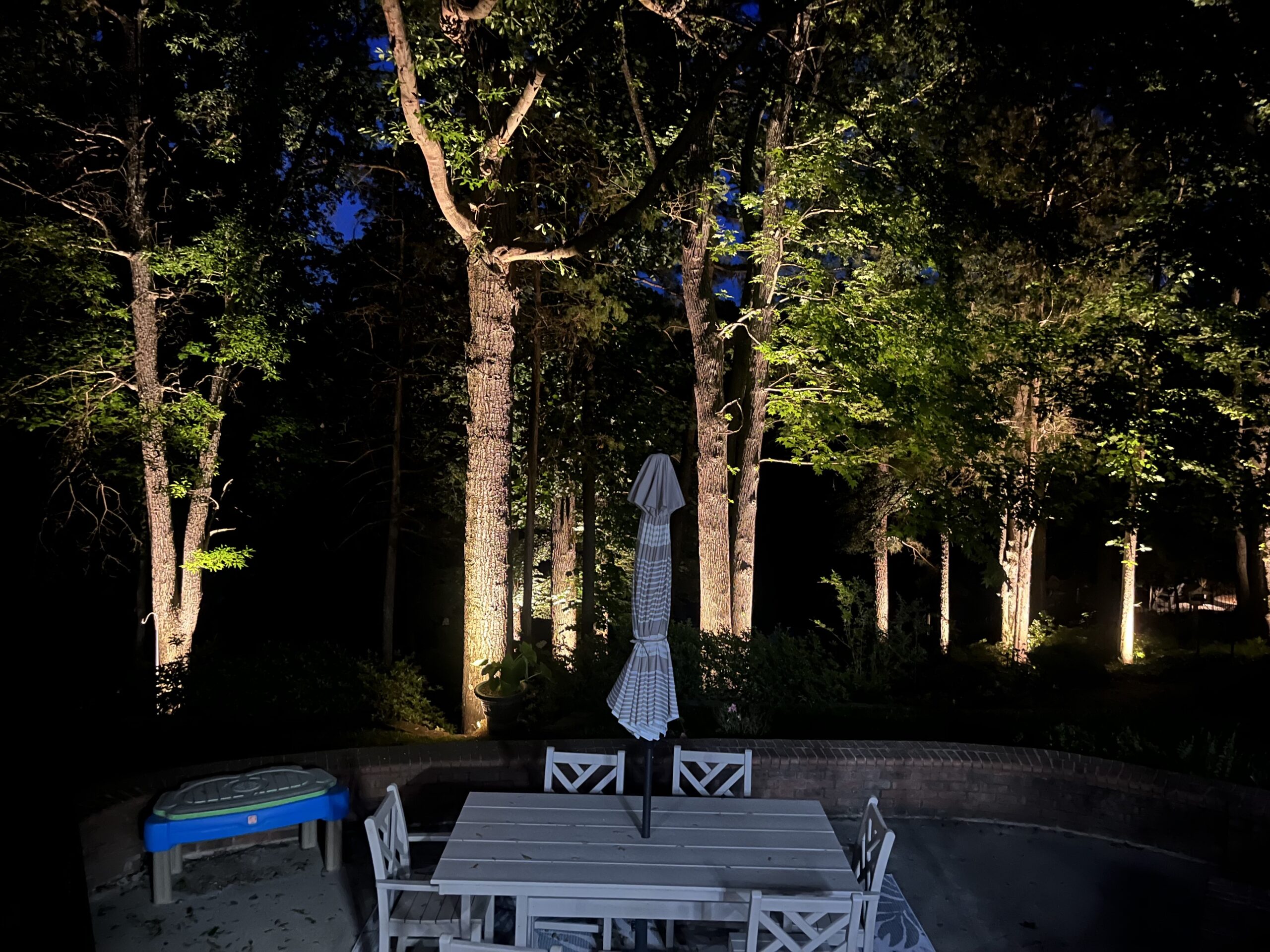When we think about the components that make up a safe and thriving neighborhood, we often think of things like law enforcement, community involvement, and perhaps even the presence of parks or communal spaces.
But there’s one often-overlooked element that can make a huge difference: residential lighting. It may seem like a small detail, but the lighting outside your home can play a pivotal role in shaping the safety, cohesiveness, and overall atmosphere of your community. From deterring crime to encouraging neighbors to interact, the way we light up our streets and homes can have a far-reaching impact.
How Does Residential Lighting Contribute to Neighborhood Safety?
It’s easy to assume that the only factor that contributes to safety in a neighborhood is having a police presence, but residential lighting has a much more significant role to play than most people realize. A well-lit neighborhood is one where residents feel secure, and here’s why:
- Increased Visibility: A well-lit neighborhood provides better visibility for both residents and passersby. When homes, streets, and walkways are brightly lit, it’s easier for people to see who is around and what is happening. This increased visibility helps to deter potential criminals who may be less likely to act if they know they’re in full view of others. Whether it’s a passing car, a neighbor walking their dog, or someone simply enjoying an evening stroll, proper lighting can prevent hidden, unsafe areas that criminals might take advantage of.
- Deterrence of Criminal Activity: Criminals tend to operate more easily in the dark, where they can hide and blend in with their surroundings. By lighting up residential areas with outdoor lighting, the likelihood of criminal activity is significantly reduced. Simple lighting additions like porch lights, streetlamps, or floodlights around homes can help prevent crimes such as burglary, vandalism, and theft. The visibility created by residential lighting sends a message to potential offenders: this neighborhood is actively protected and watched over.
- Safety for Pedestrians: In areas where there is a lack of lighting, pedestrians may feel uneasy when walking home after dark, especially in more isolated parts of the neighborhood. Dark streets or sidewalks can create physical hazards, increasing the risk of accidents like tripping or falling. Residential lighting can illuminate these areas, providing a safe and welcoming environment for individuals out walking or biking. Whether it’s for a quick errand or a leisurely walk, properly lit areas encourage outdoor activity and make the environment safer.
- Improved Emergency Response: In the event of an emergency, proper lighting can be a literal lifesaver. Ambulance or police vehicles will have better access to well-lit areas, and it’s easier for responders to locate an address or home quickly. Proper lighting also aids neighbors in identifying where help may be needed and offering assistance when they see something unusual or a potential emergency situation.
What Role Does Outdoor Lighting Play in Fostering Community Connections?
Neighborhoods thrive when people interact with each other, and outdoor lighting can play a key role in fostering these connections. Here’s how lighting helps create a space where neighbors connect, engage, and build a sense of belonging:
- Creating Welcoming Spaces: Lighting can transform outdoor spaces from dark, uninviting areas into warm, welcoming spots. Porch lights, backyard string lights, and decorative garden lights create spaces where neighbors are more likely to gather, whether it’s for casual chats or planned events like barbecues or block parties. Well-lit outdoor spaces encourage people to spend more time outside, interacting with others in their neighborhood and building relationships.
- Encouraging Social Interaction: When homes are lit up and front yards are visible, it sends a clear signal that the neighborhood is active and engaged. Homeowners are more likely to sit outside, greet passersby, and talk with their neighbors when they feel safe and comfortable in well-lit surroundings. Lighting can encourage impromptu social interactions that help build a tight-knit community, where people know each other and look out for one another.
- Supporting Community Events: Outdoor lighting doesn’t just serve practical purposes—it can also set the mood for community events. Whether it’s a neighborhood block party, a community yard sale, or a holiday celebration, lighting creates a festive atmosphere that invites participation. Lights strung up along streets, around homes, or in communal spaces make an event feel more inviting and encourage residents to join in, strengthening the sense of connection.
- Improved Curb Appeal: Lighting can also enhance the aesthetic value of a neighborhood, adding a sense of warmth and beauty to each home. When homes are lit in a thoughtful and aesthetically pleasing way, they create a visually appealing environment that reflects the pride of the homeowners. This can inspire others to improve their own outdoor spaces, contributing to a more attractive and unified community.
Can Improved Residential Lighting Reduce Crime in Local Neighborhoods?
The connection between lighting and crime reduction is significant and supported by both studies and anecdotal evidence. When residential areas are well-lit, they become less desirable targets for criminal activity. Here’s how improved residential lighting can make a noticeable impact on crime reduction:
- Crime Prevention Through Environmental Design (CPTED): Crime Prevention Through Environmental Design (CPTED) is a strategy that focuses on creating physical environments that discourage crime. A key element of CPTED is ensuring that neighborhoods are well-lit, so that areas are visible and easier to monitor. Studies have shown that neighborhoods with proper lighting tend to have lower crime rates, particularly when the lighting covers not just the streets but also areas such as alleyways, parks, and the front yards of homes. This type of lighting design can help deter crimes such as burglary, assault, and drug use by eliminating dark, secluded spaces where illegal activities are more likely to occur.
- Visibility for Law Enforcement: Residential lighting plays a critical role in allowing law enforcement to monitor and patrol neighborhoods more effectively. When areas are well-lit, police officers can more easily observe what’s happening in the neighborhood during their patrols. Criminals are less likely to engage in illegal activity if they know they are being watched. Lighting can make it easier for officers to spot suspicious behavior, enabling quicker intervention and preventing crimes before they escalate.
- Neighborly Vigilance: A community that is well-lit is one where neighbors feel comfortable keeping an eye out for one another. Proper lighting encourages residents to be more aware of what’s going on around them, as they can easily see when something is out of the ordinary. This type of vigilance can lead to quicker reporting of suspicious activity, which in turn reduces the likelihood of criminal acts. When everyone is looking out for each other, crime becomes less likely to thrive.
- Reduced Fear of Crime: One of the most important psychological impacts of residential lighting is the reduction of fear. When neighborhoods are dimly lit, residents can feel unsafe and uneasy, even if crime is not actually present. Poor lighting can create a sense of vulnerability. But when streets are well-lit, people are more likely to feel safe and secure, reducing anxiety and fostering a stronger sense of community.
Why is Lighting Important For Building a Sense of Community?
Lighting plays a critical role in shaping how people perceive and experience their neighborhood. When done thoughtfully, lighting can help build a sense of community that is supportive, welcoming, and cohesive. Here’s why lighting is so important for cultivating that sense of connection:
- Encouraging Shared Responsibility: When neighborhoods are well-lit, it signals that the community cares about its collective well-being. Well-maintained lighting shows that residents take pride in their neighborhood and are willing to invest in creating a safe and welcoming space. This shared responsibility helps foster a sense of pride and unity among residents, who are more likely to look out for each other and invest in the success of the community as a whole.
- Creating Inclusive Spaces: Lighting makes public and shared spaces, such as parks, sidewalks, and community centers, more accessible and inviting. These spaces are often the backdrop for social interactions, group activities, and community events. When these spaces are properly lit, they encourage residents to spend time there, whether it’s for exercise, recreation, or simply meeting with neighbors. This creates an inclusive environment where everyone feels welcome, regardless of the time of day.
- Supporting Neighborhood Identity: Lighting can be a powerful tool in helping to define the character and identity of a neighborhood. Thoughtfully designed lighting can highlight the unique features of a community—whether that’s historical landmarks, green spaces, or local businesses. By using lighting to accentuate these features, neighborhoods create an inviting atmosphere that is unique and memorable. This sense of identity strengthens community ties, as residents take pride in the special aspects that make their neighborhood stand out.
- Fostering Connectivity: In well-lit neighborhoods, people are more likely to spend time outdoors, engage with neighbors, and participate in community events. Whether it’s sitting on the front porch or attending a local gathering, lighting encourages social interaction and connection. These interactions are the building blocks of a strong community, where neighbors become more than just people who live near each other—they become friends, allies, and collaborators in maintaining a vibrant neighborhood.
Residential lighting is much more than a way to brighten up your home’s exterior—it’s a powerful tool for improving neighborhood safety, fostering community connections, reducing crime, and building a sense of togetherness. When we invest in lighting, we invest in a safer, more cohesive, and more connected neighborhood.
The right lighting creates an environment where people feel comfortable, welcomed, and secure, all while encouraging the interactions that make communities thrive. Whether you’re installing a simple porch light or illuminating your whole street, remember that good lighting can be the spark that ignites positive change in your community.
FAQs About Our Outdoor Lighting Services and Costs at Palmetto Outdoor Lighting
When it comes to outdoor lighting, we know that clarity and transparency are key. Here are some frequently asked questions about our services and costs to help you make an informed decision:
1. What factors influence the cost of outdoor lighting installation?
The cost of outdoor lighting installation depends on a few factors:
- Scope of the Project: Whether you’re lighting up a small garden, a large patio, or an entire yard, the size of the area will impact the cost.
- Type of Lights: Different types of lighting (landscape, pathway, security, accent lighting, etc.) come with varying costs. More decorative or energy-efficient lights may also affect the price.
- Customization and Design: A custom-designed lighting setup with tailored placements and features may be more expensive than a standard installation.
- Installation Complexity: The complexity of the installation, such as needing to install wiring or working with challenging terrain, can impact the overall cost.
2. Do you offer a free consultation for outdoor lighting design?
Yes! We offer a complimentary consultation to assess your outdoor lighting needs, understand your vision, and provide recommendations for the best lighting solutions. During the consultation, we’ll walk you through design options, lighting placements, and cost estimates.
3. How long does the installation process take?
The time required for installation depends on the size of the project. A simple landscape lighting installation may take just a few hours, while larger projects with more complex designs could take a few days. Our team works efficiently to minimize disruption while ensuring high-quality results.
4. Are your outdoor lighting systems energy-efficient?
Absolutely! At Palmetto Outdoor Lighting, we prioritize energy-efficient solutions. We offer LED lighting systems that provide the same high-quality illumination while using significantly less energy than traditional lighting. This helps reduce your electricity bills while being environmentally friendly.
5. How long do outdoor lighting systems last?
Our outdoor lighting systems are built to last for many years. With quality materials and installation, you can expect your lights to function for up to 20 years or more with minimal maintenance. Additionally, LED lights typically have a much longer lifespan than incandescent bulbs.
Let Us Brighten Up Your Outdoors with Palmetto Outdoor Lighting
At Palmetto Outdoor Lighting, we specialize in creating beautiful and functional outdoor lighting designs that enhance the safety, beauty, and ambiance of your home. Whether you’re looking to illuminate your garden, highlight architectural features, or add security lighting, we have the expertise and solutions you need.
Here’s how we can help:
- Custom Lighting Design: Our team creates tailored lighting designs to suit your home’s architecture and landscape.
- Energy-Efficient Solutions: Save on utility bills with our LED lighting options designed for optimal performance and minimal energy consumption.
- Long-Term Durability: Enjoy peace of mind knowing your lighting system is designed to withstand the elements and provide reliable illumination for years.
Contact Palmetto Outdoor Lighting today to schedule your consultation and start transforming your outdoor spaces with the magic of well-designed lighting!


